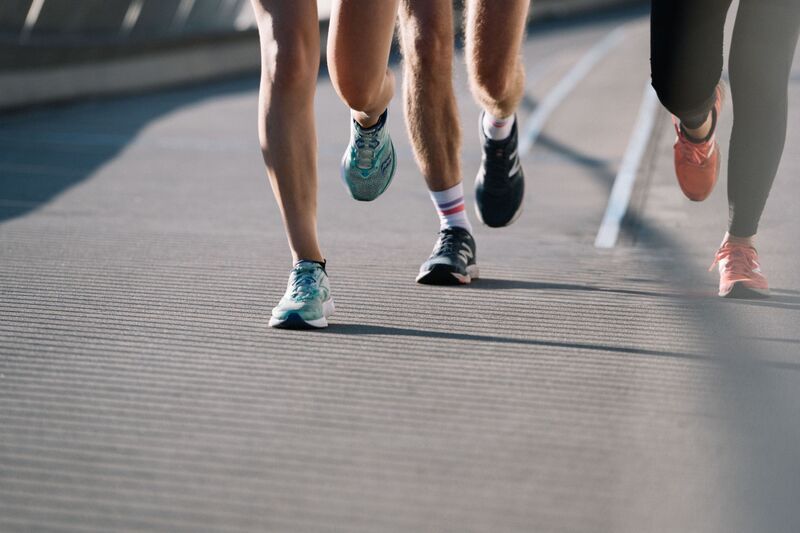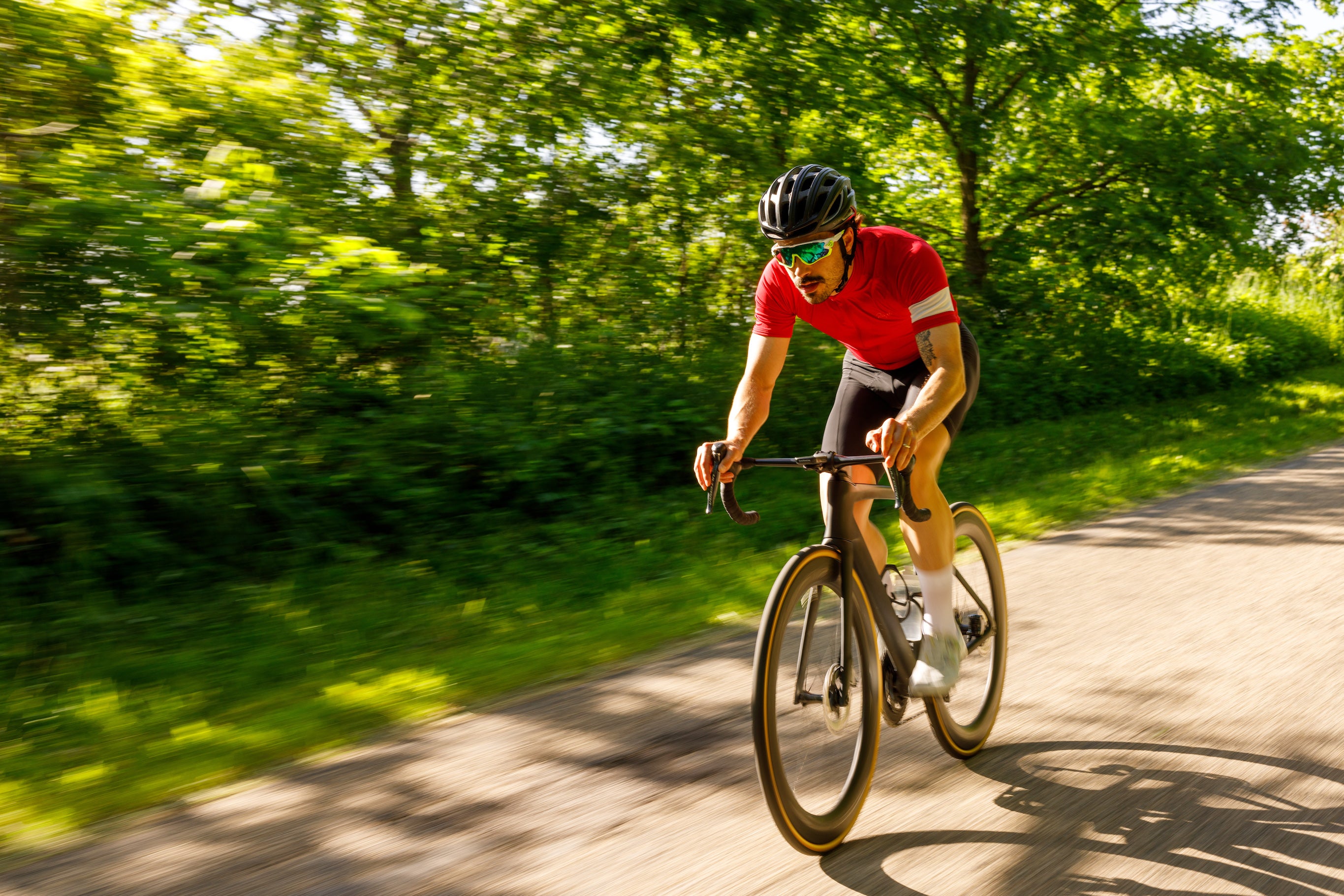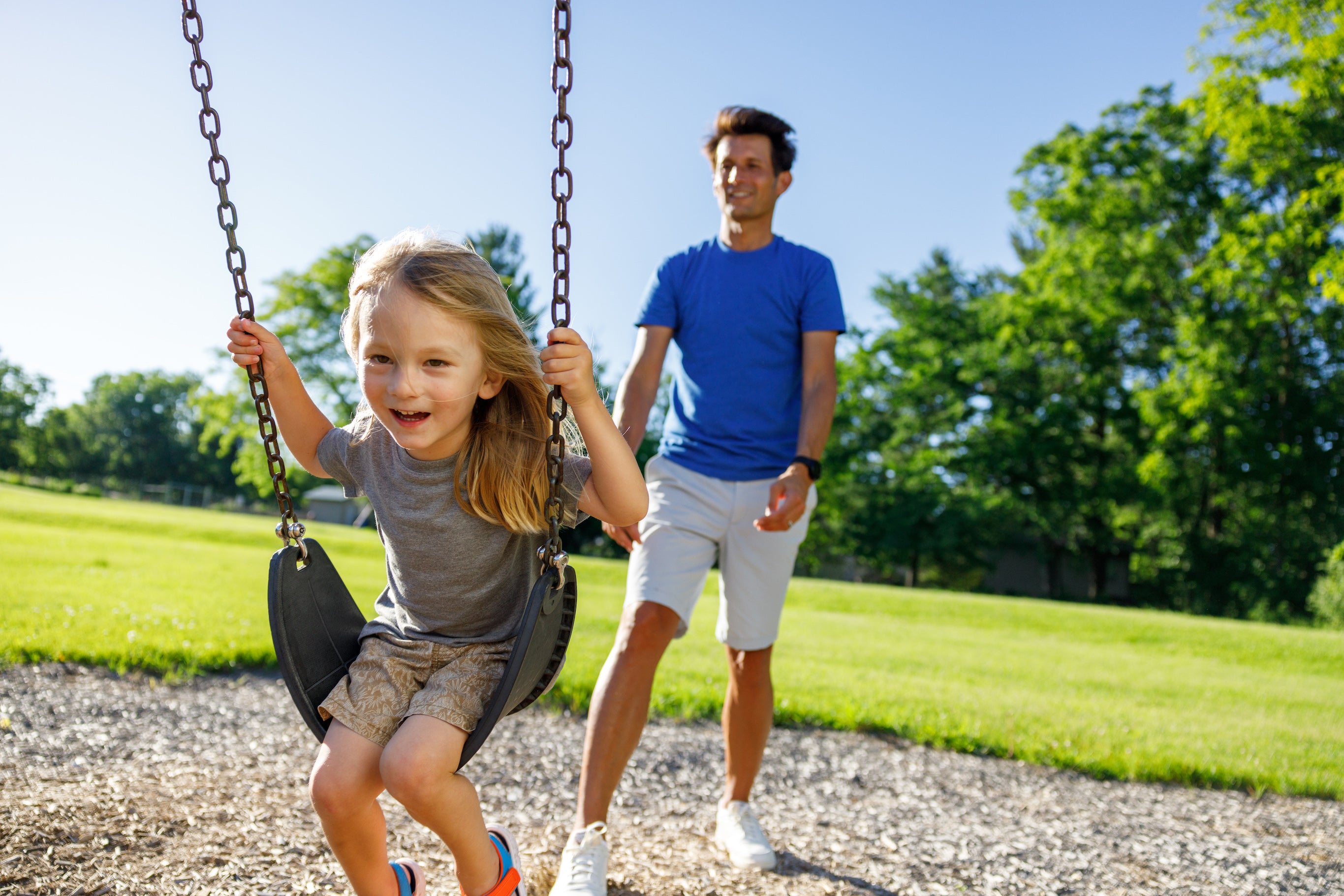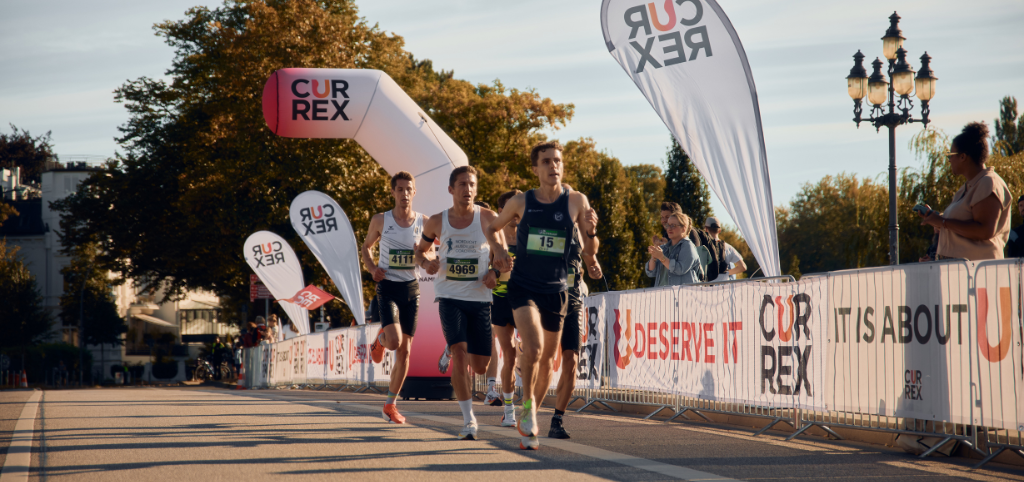RUNNER'S KNEE: TREATMENT AND SYMPTOMS OF ITBS

RUNNER'S KNEE: TREATMENT AND SYMPTOMS OF ITBS
You're in the middle of your running training and suddenly you feel a sharp pain on the outside of your knee. What's behind it? The most common cause of knee pain is runner's knee, also known as runner's knee or iliotibial tract syndrome (ITBS). Our knees can withstand a lot - a load of up to 300 kg is exerted on the knee joint during one step. We can only withstand this load if all structures such as cartilage, ligaments and muscles interlock perfectly. In this article, we explain how runner's knee develops, the causes and symptoms of ITBS and what you can do about it.
In a nutshell
- RUNNERS KNEE OR TRACTUS ILIOTIBIALES SYNDROME (ITBS)
- RUNNER'S KNEE SYMPTOMS
- WHAT CAUSES RUNNER'S KNEE?
- RUNNER'S KNEE TREATMENT
- RUNNER'S KNEE: HOW LONG A BREAK?
- PREVENT RUNNER'S KNEE: PREVENTION IS BETTER THAN AFTERCARE
RUNNERS KNEE OR TRACTUS ILIOTIBIALES SYNDROME (ITBS)
Runner's knee is one of the most common complaints among runners and is an irritation on the outside of the knee joint caused by overuse.
Now it's getting anatomical: as the name suggests, the iliotibial tract, a tendon plate, is responsible for iliotibial tract syndrome. Due to its stabilizing function for the hip and knee, the iliotibial tract is essential for our walking movement. It runs from the pelvis along the lateral thigh over the outside of the knee to the head of the fibula. Normally, this tendon plate glides past the knee without any problems. However, in the case of iliotibial tract syndrome, the iliotibial tract rubs against the outer bony prominence of the femur above the knee joint - like a rope on a rock, so to speak. To prevent the rope from breaking, we have a bursa behind this ligament. However, if the stress is too high, the bursa and the iliotibial tract itself become irritated - which is exactly what causes the stabbing pain.
RUNNER'S KNEE SYMPTOMS
Are you plagued by a sharp pain in the outer knee joint or in the pelvic area? This is how runner's knee often manifests itself. The classic runner's knee symptoms: Affected individuals initially complain of knee pain while running. As the condition progresses, this can also occur when walking, standing up after sitting, or even as pain at rest.If the tendon plate is severely irritated, Runners Knee can also present with swelling, redness, or warmth.
WHAT CAUSES RUNNER'S KNEE?
How did you get runner's knee? Experts explain iliotibial tract syndrome (ITBS) with the following causes:
Weak and shortened muscles
Weak gluteal and core muscles on one side can mean that the pelvis is not held correctly when running. The lowering of the pelvis increases the tension at the base of the tractus and therefore the friction on the outside of the knee joint. However, shortening of the muscles in the hip area also causes the tendon plate (iliotibial tract) to slide over the outside of the knee joint with increased tension.
Unsuitable running shoes
Are your running shoes not perfectly suited to your foot shape and running style? This can make you even more susceptible to ITBS and increase the friction points. The same applies to standard insoles that are not adapted to your foot shape or your needs - try the 3D contact of CURREX insoles instead.

Misalignment of the leg axes
One thing is certain: The imbalance and consequent friction of the iliotibial tract described above is exacerbated by an altered leg axis. Bow legs or bow legs lead to incorrect loading, which affects the muscles and joints and thus promotes tractus syndrome.
Foot malpositions
Just like unsuitable running shoes, a foot malposition such as a hollow foot, splayfoot or kinked foot can also cause Runners Knee. Tilting the foot inwards when jogging (bowed foot), for example, increases the strain on the knees and thighs. Another example is the increased rolling over the outer edge of the foot (supination) as a result of a kinked foot. To compensate for the misalignment, the iliotibial tract reacts with increased tension.
High training intensity
Excessive training intensity or a lack of regeneration is also a trigger for overloading. Beginners in particular, who have discovered jogging for themselves, often approach running training too enthusiastically, increase their training volume too quickly and regenerate too briefly. But even experienced runners sometimes forget to listen to their body when they are aiming for their best time and overshoot their target.
Changed route characteristics
Another point is the nature of the route, i.e. if you have been on hilly trails or have run downhill a lot, this can also be the trigger for tractus syndrome.
RUNNER'S KNEE TREATMENT
So what to do about runner's knee? Your ambition in all honor - but as with most running injuries, the same applies to Runners Knee: don't run into the pain. Stop your running session when the pain in the knee or hip area appears. For more severe and persistent pain, consult a doctor to get to the bottom of the cause and find the right Runners Knee treatment for you. How you can complementary treat runner's knee:

"Runner's knee exercises": Strengthening and stabilization
We have learned that tractus syndrome occurs as a result of muscular deficits. For this reason, you should focus on your calf, core, gluteal and thigh muscles. "Runner's knee exercises", such as side lunges or the standing balance, will get your muscles going. Strengthening your gluteal muscles ensures that your hips are sufficiently extended during movement. This ensures the correct movement sequence and prevents the stronger side of the hip from sinking.
Stretching the iliotibial tract
If you want to say goodbye to runner's knee, you should integrate stretching exercises into your training program. Various exercises can be used to specifically stretch the iliotibial tract. Have you tried crossing your legs while standing or tilting your upper body sideways? Or bend one leg while lying on your back, place the other over the side and then pull both towards you until you feel the stretch in your hips.
Taping runner's knee
Kinesio tape on the iliotibial tract can be beneficial for treating your runner's knee. As already mentioned in our article on tibial plateau syndrome, its effect has not been scientifically proven, but taping the runner's knee is certainly characterized by positive experiences.
Fascia training against runner's knee
Give the fascia roll a chance. The Blackroll helps you to loosen the iliotibial tract, keep it supple and mobilize the muscles. The resulting mobility also increases your resilience.
Runner's knee support
A runner's knee support can help to stabilize your knee. This relieves and stabilizes the inflamed tendon insertion.
RUNNER'S KNEE: HOW LONG A BREAK?
The healing time for runner's knee varies naturally: In most cases, 2-6 weeks pass before the tendon and ligament apparatus heal completely. After the acute ITBS symptoms have subsided, you can usually start cautious training after 2 weeks. In any case, you should take the break recommended by your doctor in order to completely eliminate the one-sided strain with the help of corrective exercises. Even if you already feel completely fit at a later point in time, you should slowly increase the intensity and distance so as not to fall back into old patterns.
PREVENT RUNNER'S KNEE: PREVENTION IS BETTER THAN AFTERCARE
There is practically no runner who has not complained of knee pain at least once in their training life or after competitions. To prevent runner's knee, just like other overuse injuries, you should take a few points to heart:
Identify the weaker side of the body
Not sure which side of your body is your best side? A look in the mirror at the development of your calf or thigh muscles provides information about muscular imbalances. But even in simple everyday situations, the stronger half of your body becomes apparent. Which leg do you land on when someone gives you a push? Which leg do you generally prefer to stand on? How do you cross your legs? Pay more attention to your weaker side.
Balanced training
If you want to avoid ITBS in the future, your focus should be on balanced training. In addition to running training, this also includes strengthening and stabilization exercises as well as stretching. A mix with other sports such as swimming or cycling is also good for you.
Running shoes and insoles
To make tractus syndrome a thing of the past, you should definitely take a close look at your running shoes. Have you already run about 1000km in them? Is the model the right one for your physical constitution and the way you move? Ask a specialist for advice on which shoes are suitable and which insoles, such as the CURREX RUNPRO, will provide you with the best support during your runs.
SUMMARY
Let's briefly summarize how you should best treat or prevent runner's knee:
- Shift down a gear. Your body needs more time to get used to your increased running workload. Stop your training if you feel knee pain.
- Recognize and eliminate running technique errors. A professional running analysis, such as in the CURREX 5 D Lab, will tell you whether your running technique may be responsible for iliotibial tract syndrome. You will also receive tips on suitable running shoes and insole support.
- Train your weak points. Focus on runner's knee exercises, i.e. exercises for your gluteal muscles, front and rear thigh muscles and deep core muscles. This allows you to effectively counteract muscular imbalances. Targeted stretching exercises should also be part of your everyday sporting routine to make tractus syndrome a thing of the past in future.










